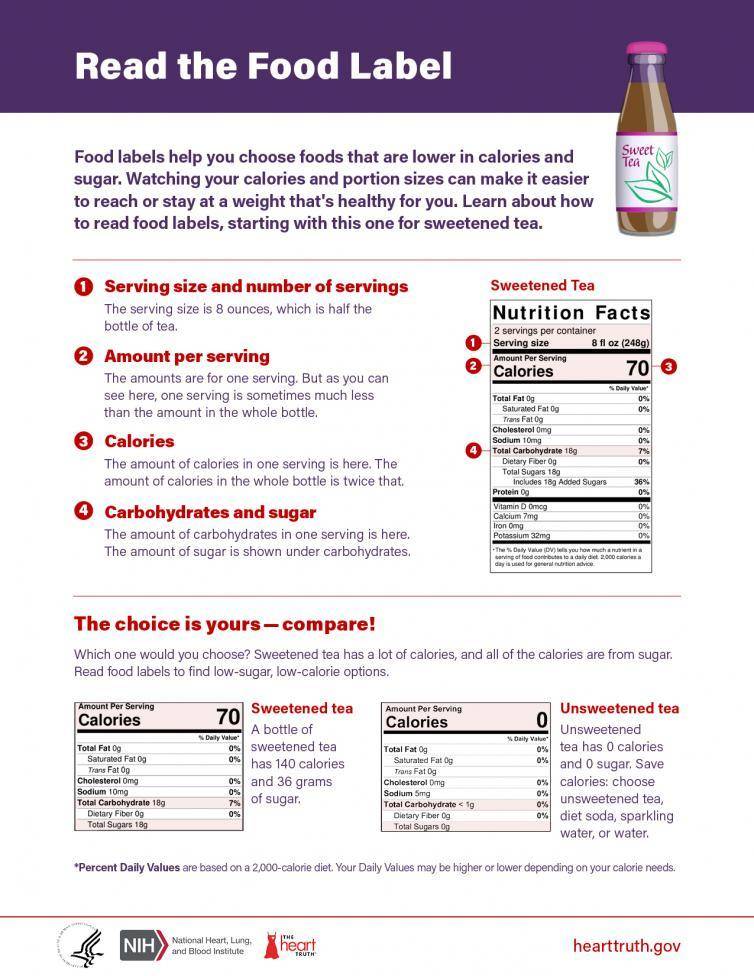The Reading Food Labels Worksheet helps individuals understand the information provided on food labels, promoting informed food choices. The worksheet enhances knowledge of serving size, nutrient content, and ingredients, enabling consumers to make healthier choices.

Credit: www.pinterest.com
Importance Of Reading Food Labels
Understanding the nutritional value of the food you consume is crucial for maintaining a healthy lifestyle. By reading food labels, you can make more informed choices about what you eat, enabling you to manage your diet and ensure you are meeting your nutritional needs.
Understanding Nutritional Information
When you read food labels, you gain insight into the nutritional content of the product. This includes details such as serving size, calorie count, and the amount of vital nutrients like protein, carbohydrates, fats, and vitamins present in the food. This allows you to make choices that align with your dietary requirements, contributing to your overall well-being.
Identifying Allergens And Additives
Food labels are essential for identifying potential allergens and additives in products. If you have food allergies or intolerances, reading food labels helps you steer clear of ingredients that could trigger adverse reactions. Additionally, being aware of additives allows you to make informed decisions about the products you consume, ensuring you avoid potentially harmful substances.
Key Components Of Food Labels
Understanding the key components of food labels is essential for making informed choices about the foods we consume daily. Each section of a food label provides important information about the product’s nutritional content and ingredients. Let’s break down the critical elements found on a food label worksheet:
Serving Size And Servings Per Container
Serving Size: Indicates the recommended portion size per serving.
Servings Per Container: Specifies how many servings are in a single package or container.
Calories And Macronutrients
Calories: The amount of energy provided by one serving of the food.
Macronutrients: Include carbohydrates, fats, and proteins that make up the food’s nutritional composition.
Vitamins And Minerals
- Vitamins: Essential nutrients that the body needs in small quantities for various functions.
- Minerals: Inorganic substances crucial for maintaining bodily functions and overall health.
Ingredients List
Ingredients List: Details all the components used in making the product, listed in descending order by weight.
Decoding Nutritional Information
Understanding how to read and interpret food labels is essential for making informed and healthy choices. By decoding the nutritional information on food labels, you can gain valuable insights into the nutritional content of the product you are purchasing. In this section, we will explore two important aspects of decoding nutritional information: interpreting daily values and understanding %DV and nutrient claims.
Interpreting Daily Values
Daily Values (DV) provide a reference point for understanding the nutritional content of a food item in relation to your daily diet. These values are based on a 2,000-calorie diet, which is considered average for adults. By comparing the actual nutrient content listed on the food label to the DV, you can determine how much of a specific nutrient is present in the food and how it contributes to your overall daily intake.
It’s important to note that the DV percentages on the food label are based on a single serving size, which may differ from the portion size you consume. To accurately assess the nutritional value, always pay attention to the serving size indicated on the label and adjust the calculations accordingly.
Understanding %dv And Nutrient Claims
The %DV on a food label represents the percentage of the recommended daily intake for a nutrient that a single serving of the product provides. For example, if a food item has a %DV of 10% for vitamin C, it means that consuming one serving of that product contributes to 10% of the recommended daily intake for vitamin C.
Nutrient claims, such as “good source of fiber” or “low in sodium,” can also be found on food labels. These claims are regulated by the Food and Drug Administration (FDA) and have specific criteria that must be met for their use. Understanding these claims can help you make more informed choices about the nutritional content of the product and how it aligns with your dietary needs.
To fully understand the nutritional value of a food item, it’s important to consider both the %DV and the nutrient claims. The %DV provides a standardized measure, while nutrient claims offer specific information about certain nutrients. By combining these two sources of information, you can make more informed decisions about which foods align with your nutritional goals.
By decoding nutritional information, you can gain a better understanding of the nutritional content of the foods you consume, helping you make healthier choices. The next time you pick up a product at the grocery store, take a moment to read and analyze the food label, keeping in mind the information you have learned here. Empower yourself with knowledge, and make informed decisions to support your health and well-being.
Recognizing Hidden Ingredients And Additives
Unraveling hidden ingredients and additives plays a crucial role in deciphering food labels. By utilizing a reading food labels worksheet, individuals can enhance their awareness and make informed choices about their dietary intake. Understanding what goes into food products empowers consumers to prioritize their health and well-being.
Recognizing Hidden Ingredients and Additives
When it comes to reading food labels, it’s not just about checking the calories and nutritional information. It’s also crucial to be aware of the hidden ingredients and additives that might be hiding in our everyday food products. This worksheet will guide you through the process of recognizing these hidden ingredients and additives. Let’s delve into two important aspects – spotting high-fructose corn syrup and identifying artificial colors and preservatives. Read on to understand why it’s important and how to spot them on food labels.
Spotting High-fructose Corn Syrup
High-fructose corn syrup (HFCS) is a sweetener commonly used in processed foods, beverages, and even condiments. It’s made from cornstarch and has a similar sweetness to sugar. However, it has been linked to various health concerns, including obesity and diabetes. Spotting HFCS on food labels can be a bit tricky, but with a keen eye, you’ll be able to identify it easily.
First and foremost, check the ingredient list. Look for words like “high-fructose corn syrup,” “corn syrup,” or “corn syrup solids.” These terms indicate the presence of HFCS. Keep in mind that HFCS can have different percentages, such as HFCS-55 or HFCS-42, representing the amount of fructose it contains. The higher the percentage, the sweeter it is.
To further identify HFCS, pay attention to any foods that are labeled as “low-fat” or “diet.” These products often contain added sugars, including HFCS, to compensate for the reduced fat content. Be skeptical of such claims and examine the ingredient list carefully.
Identifying Artificial Colors And Preservatives
Artificial colors and preservatives are commonly added to enhance the appearance, flavor, and shelf life of processed foods. However, they have been associated with various health issues, including hyperactivity in children and allergic reactions. To ensure you make informed choices, it’s essential to know how to identify these additives on food labels.
One way to spot artificial colors is by looking for specific names like “Red 40,” “Yellow 5,” or “Blue 1.” These numbers represent the synthetic colors used in the product. Companies are often required to disclose these additives, either by name or as a general term like “artificial color.”
When it comes to preservatives, some common ones to watch out for include “BHA” (butylated hydroxyanisole), “BHT” (butylated hydroxytoluene), and “TBHQ” (tert-butylhydroquinone). These additives help extend the shelf life of products but have raised concerns in terms of potential health risks. As always, read the ingredient list carefully and be conscious of these additives.
In conclusion, recognizing hidden ingredients and additives is a crucial step toward making informed food choices. By becoming familiar with the signs of high-fructose corn syrup and identifying artificial colors and preservatives, you can take control of your health and well-being. Remember, knowledge is power when it comes to reading food labels – it enables you to make healthier and more informed choices for yourself and your loved ones.
Reading Labels For Specific Diets
Navigating Labels For Gluten-free Diet
Check labels for “gluten-free” to ensure safety for those with gluten intolerance.
Understanding Labels For Vegan And Vegetarian Diets
Look for plant-based ingredients and no animal products; verify vegan certifications.

Credit: www.madebyteachers.com
Practical Application Of Reading Food Labels
Understanding food labels is an essential skill for making informed food choices. By deciphering the information on food labels, you can gain valuable insights into the nutritional content of the products you consume. This knowledge allows you to make healthier decisions for yourself and your family.
Making Informed Food Choices
Reading food labels is the first step towards making informed food choices. By examining the list of ingredients, you can identify potential allergens or additives that you may want to avoid. Additionally, the nutritional facts panel provides key information about the amount of calories, fats, sugars, and other nutrients present in a serving of the product.
Here are some helpful tips for making informed food choices:
- Look for products with shorter ingredient lists, as they tend to be less processed.
- To properly determine the nutritional value, pay attention to the serving size and the quantity of servings per container.
- Focus on the “Percent Daily Value” (% DV) to understand how the nutrients in the product contribute to your daily needs.
- Avoid products that contain high amounts of saturated fats, trans fats, sodium, and added sugars.
- Opt for products that are rich in vitamins, minerals, fiber, and healthy fats.
Using Labels For Meal Planning
Food labels can also be a valuable tool for meal planning. By examining the nutritional information on different products, you can create balanced meals that meet your dietary goals.
Here are some ways you can use food labels for meal planning:
- Compare the nutritional content of different products to choose the healthier option.
- Use the % DV to ensure you are meeting your daily nutritional requirements.
- Consider the macronutrient composition of the products to ensure a balanced distribution of carbohydrates, proteins, and fats in your meals.
- Pay attention to portion sizes when planning your meals to avoid consuming excessive amounts of calories or nutrients.
- Include a variety of fruits, vegetables, whole grains, and lean proteins in your meal plan to ensure a diverse range of nutrients.
By incorporating food labels into your meal planning process, you can create balanced and nutritious meals that support your overall health and well-being.
Common Labeling Pitfalls
Understanding food labels is crucial when making healthy dietary choices. However, it can be challenging to navigate through the marketing jargon and confusing serving sizes. In this section, we’ll discuss two common labeling pitfalls to watch out for: misleading marketing terms and ambiguous serving sizes.
Misleading Marketing Terms
Food manufacturers often use marketing terms that sound healthy or natural, but in reality, they can be misleading. It’s essential to look beyond these terms and read the actual ingredients and nutritional information to make informed decisions.
Here are some commonly used marketing terms to be cautious of:
| Marketing Term | What it may imply | Reality |
|---|---|---|
| Organic | Free from pesticides and chemicals | Must be certified by an authorized body to truly be organic |
| All-natural | Minimally processed, and no added chemicals | Not regulated by the FDA, and can still contain artificial ingredients |
| Low-fat | Low in fat content | May still be high in sugar or synthetic additives |
Remember to always review the complete list of ingredients and check the nutritional facts panel for an accurate understanding of the product’s composition.
Ambiguous Serving Sizes
Another common labeling pitfall is ambiguous serving sizes. Manufacturers often manipulate serving sizes to make their products appear healthier or to downplay their high calorie or sugar content. It’s important to be aware of this and adjust your serving sizes accordingly to make accurate calculations.
Here are a few tips for interpreting serving sizes:
- Avoid assuming a package is a single serving. Sometimes, a package may contain multiple servings, which means you need to multiply the nutrient values to get an accurate picture.
- Verify how much is actually consumed by comparing the serving size to that. If you consume more or less than the listed serving size, adjust the nutrient values accordingly.
- Pay attention to both the serving size and the number of servings per container to understand the total nutrients you are consuming.
By being aware of these common labeling pitfalls and taking the time to read food labels carefully, you can make informed decisions about the foods you buy and consume, making sure your health goals remain in focus.

Credit: www.spedadulting.com
Tools For Better Understanding Food Labels
Discovering the right tools is crucial for enhancing your comprehension of food labels. These resources empower you to make informed choices about the foods you consume. By utilizing modern technologies and expert consultations, you can navigate nutritional information more effectively.
Utilizing Apps For Label Analysis
- Download user-friendly apps for detailed analysis of food labels.
- Scan barcodes to access nutritional facts quickly and effortlessly.
- Find out what works best for you based on your food choices.
Consulting Dietitians And Nutritionists
- Arrange consultations with registered dietitians or nutritionists.
- Gain valuable insights into interpreting complex food label terminology.
- Obtain tailored advice on selecting healthier food options.
Food label worksheet high school
The Food Label Worksheet for high school students is an invaluable educational tool designed to foster critical thinking about nutrition and food choices. Through this worksheet, students explore the intricate details of food labels, learning to decipher important information such as serving size, calories, nutrients, and ingredients.
By engaging with real-world examples, students gain practical skills in evaluating the nutritional content of various foods, understanding the significance of different nutrients, and making informed decisions about their dietary intake. This hands-on activity encourages students to develop a deeper awareness of the connection between food choices and overall health, empowering them to make healthier decisions both now and in the future.
Frequently Asked Questions For Reading Food Labels Worksheet
What Are The 10 Rules For Reading A Food Label?
Sure, here is a short and accurate answer: The 10 rules for reading a food label are: 1. Check serving size and servings per container 2. Consider fat, cholesterol, and sodium levels 3. Look for essential nutrients like vitamins and minerals 4.
Check for added sugars and artificial ingredients 5. Examine the fiber and protein content 6. Evaluate the calorie count 7. Pay attention to the ingredient list 8. Avoid highly processed foods 9. Consider the source of fats and oils 10.
Be mindful of portion sizes.
How Do You Read Food Labels For Beginners?
When reading food labels, check the serving size, calories, and nutrients. Look for added sugars, unhealthy fats, and artificial additives. Pay attention to the % Daily Value to understand the nutrient content. Choose products with lower sodium and sugar levels.
Prioritize whole, natural foods for better nutrition.
What Are The 6 Steps To Reading A Food Label?
To read a food label, follow these 6 steps: 1. Check serving size, 2. Look at calories, 3. Examine nutrients, 4. Watch for added sugars, 5. Limit unhealthy fats, and 6. Scan the ingredient list.
What Is The 5/20 Rule On Food Labels?
The 5/20 rule on food labels refers to the recommended nutritional percentage values for a healthy diet. It suggests that if a nutrient is listed in a food product with a value of 5% or less, it is considered low, while a value of 20% or more is deemed high.
This helps consumers make informed choices about their food intake.
Conclusion
Understanding food labels is essential for making informed nutrition choices. Take the time to review labels carefully. Look out for hidden sugars, unhealthy fats, and artificial ingredients that could affect your health. By decoding food labels, you empower yourself to prioritize healthier eating habits, leading to a healthier lifestyle.
Start decoding today!

I am a health writer and blogger based in the US and UK. I have been with the health department for six years. And I give advice on various health problems and solutions. I have a lot of experience in health matters and I share it here.

